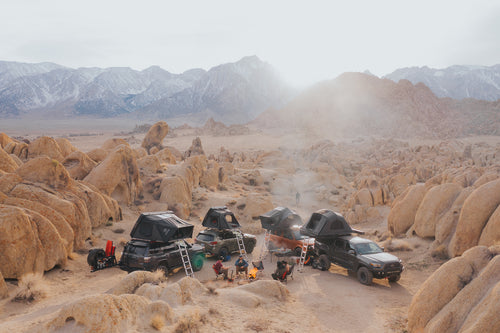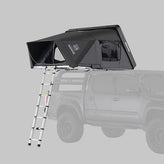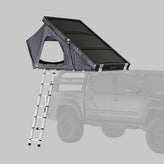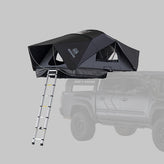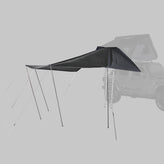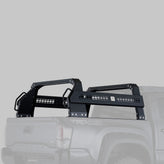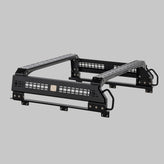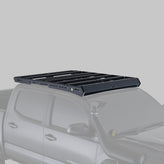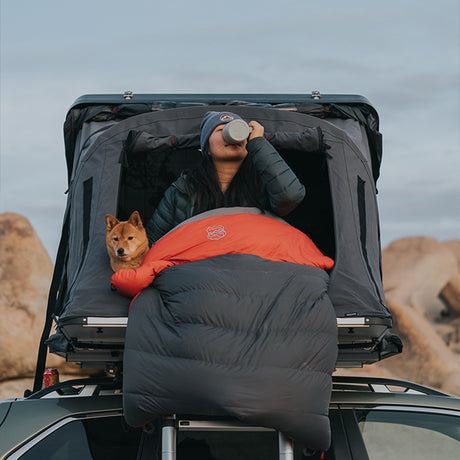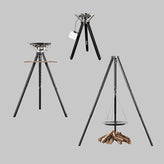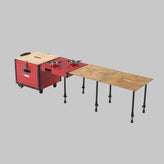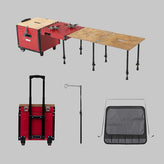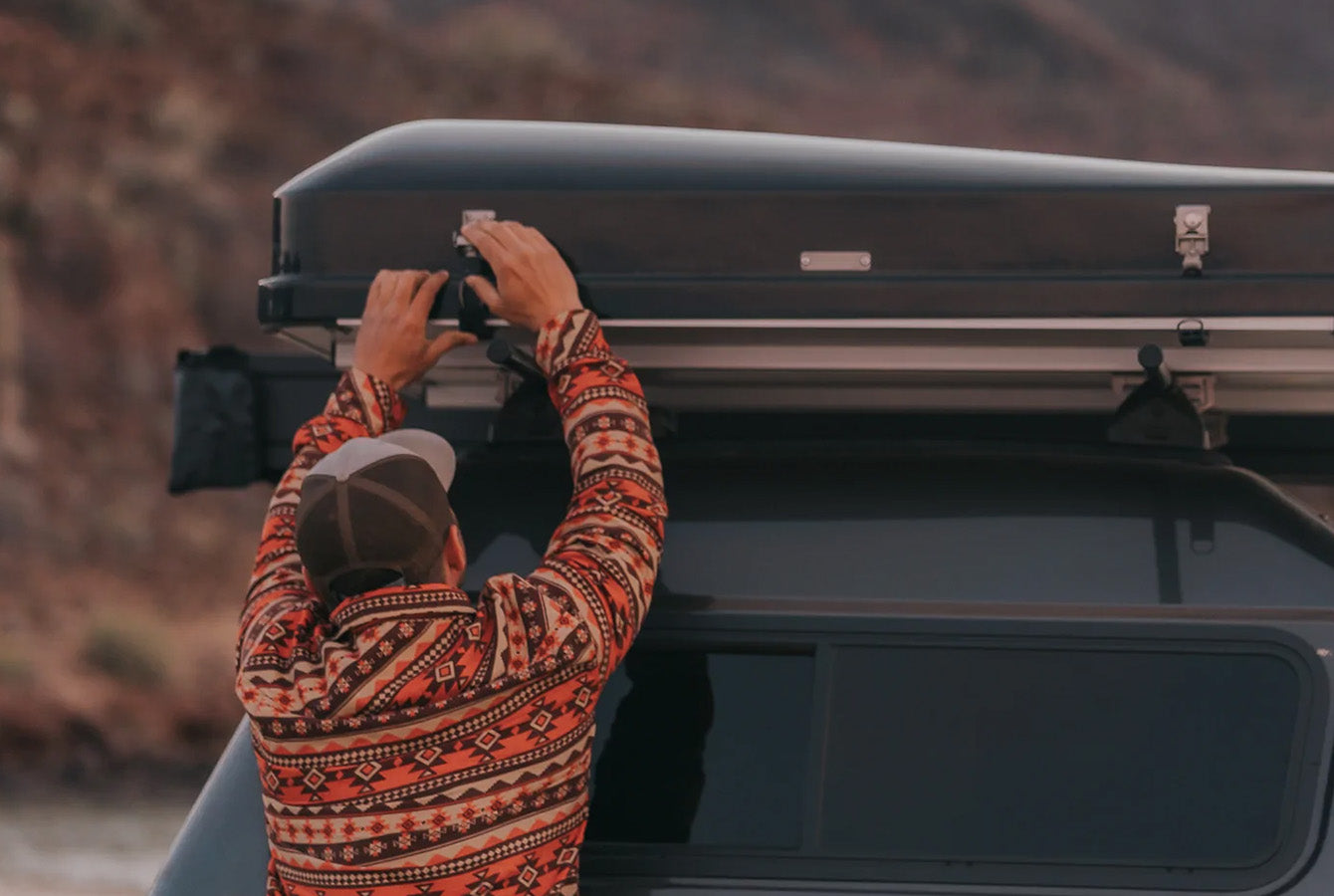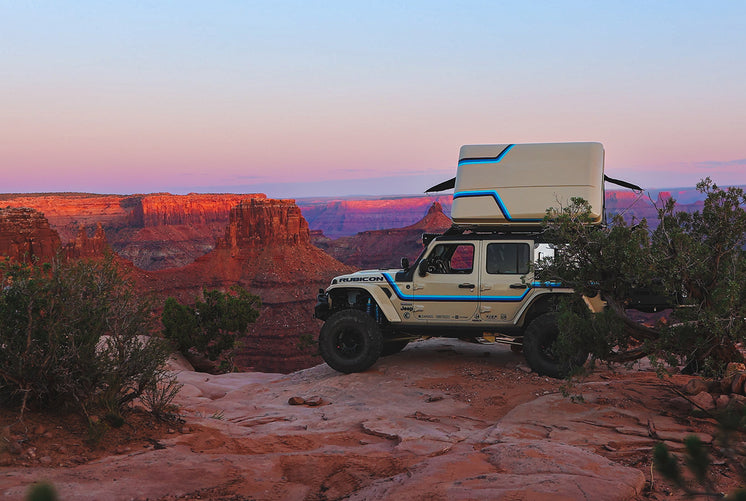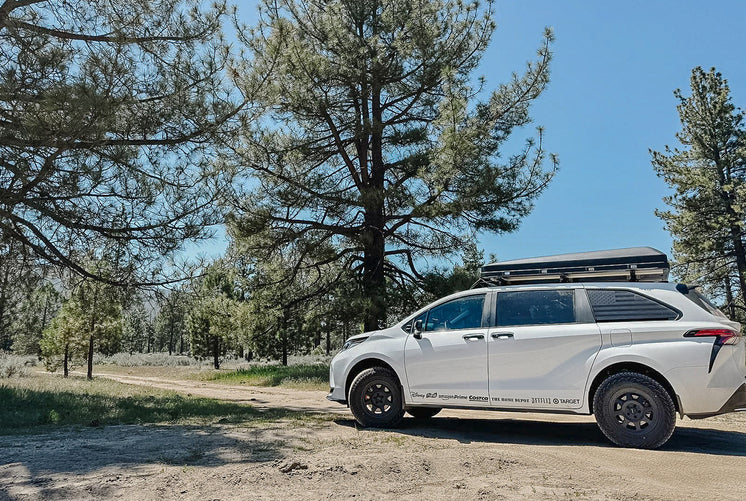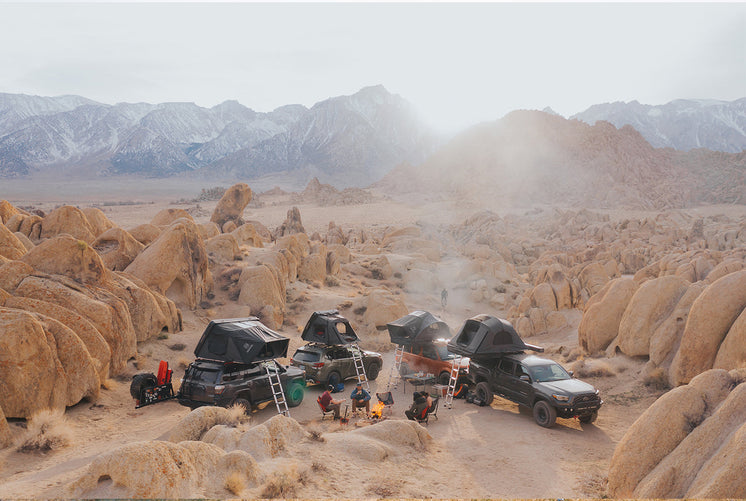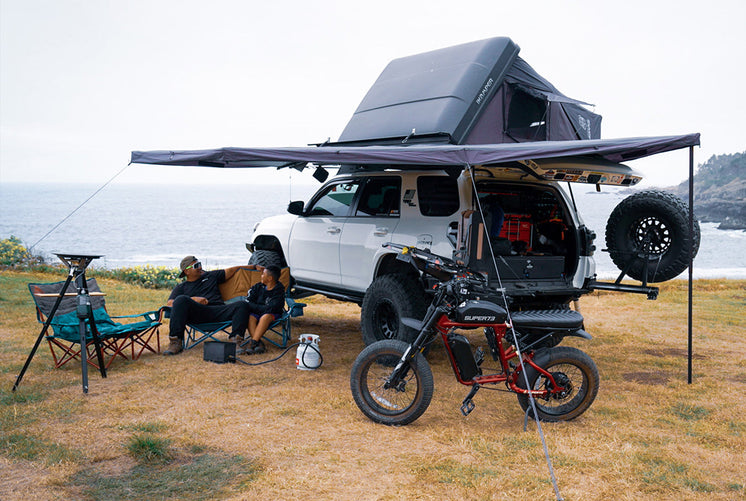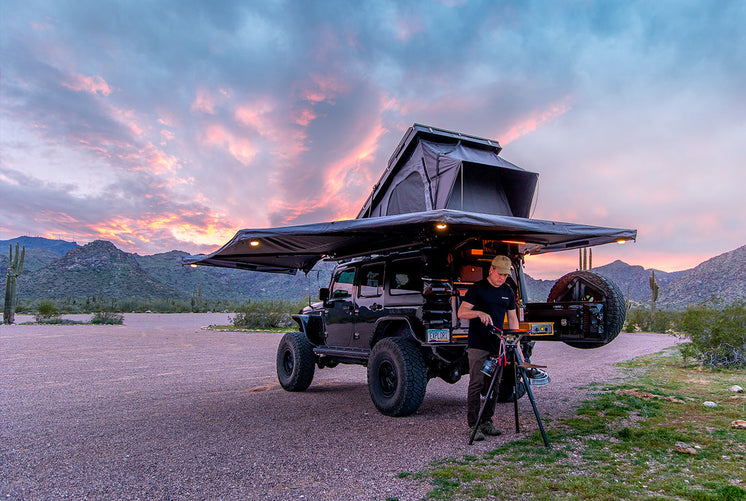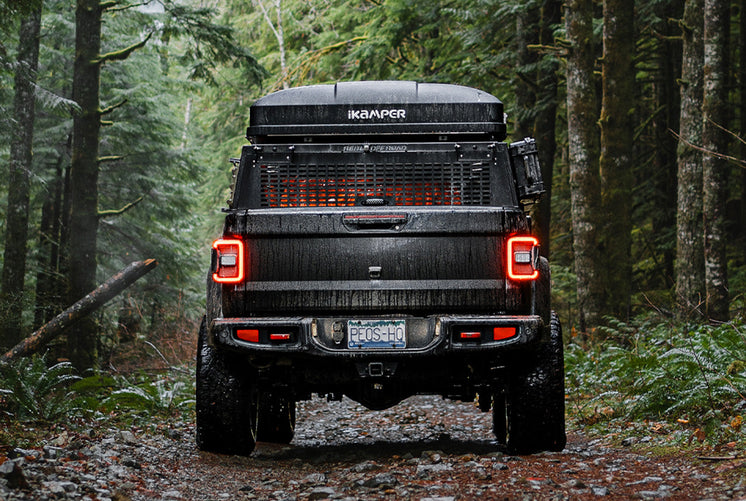How to Mount a Roof Top Tent | A Step by Step Guide
So, you finally decided to get a roof top tent... CONGRATULATIONS! It's time to make plans to camp in your new palace on wheels, and if you're still wondering how to mount the roof top tent to your vehicle, we've got a plan for you!
In this "How-To" article, we plan to cover the two types of weight capacities of your vehicle/roof rack, the three types of mounting options, and some brand recommendations for cross bars and roof racks that work for common vehicles we find our roof top tents attached to.
You'll finish this article feeling confident, knowing that you have a roof rack system that is ready to tackle road trips, overland excursions, and whatever the weekend throws at you.
What's the difference between a roof rack and cross bars?
There are three common types of mounting options for your vehicle. If you own a car or SUV, a roof rack or cross bar system will be the two types you will want to focus on. If you own a truck, you have three types of mounting options; a roof rack, cross bars, and a bed rack. Below, we will focus on cross bars and roof racks for cars, SUVs and trucks. If you own a truck and only want to learn about bed racks, skip to the last section.
Below is an example of cross bars mounted on a car and jeep, then roof rack on an SUV, and finally a cab-height bed rack for long RTTs on short beds & a low bed rack for compact RTTs on a short bed truck.

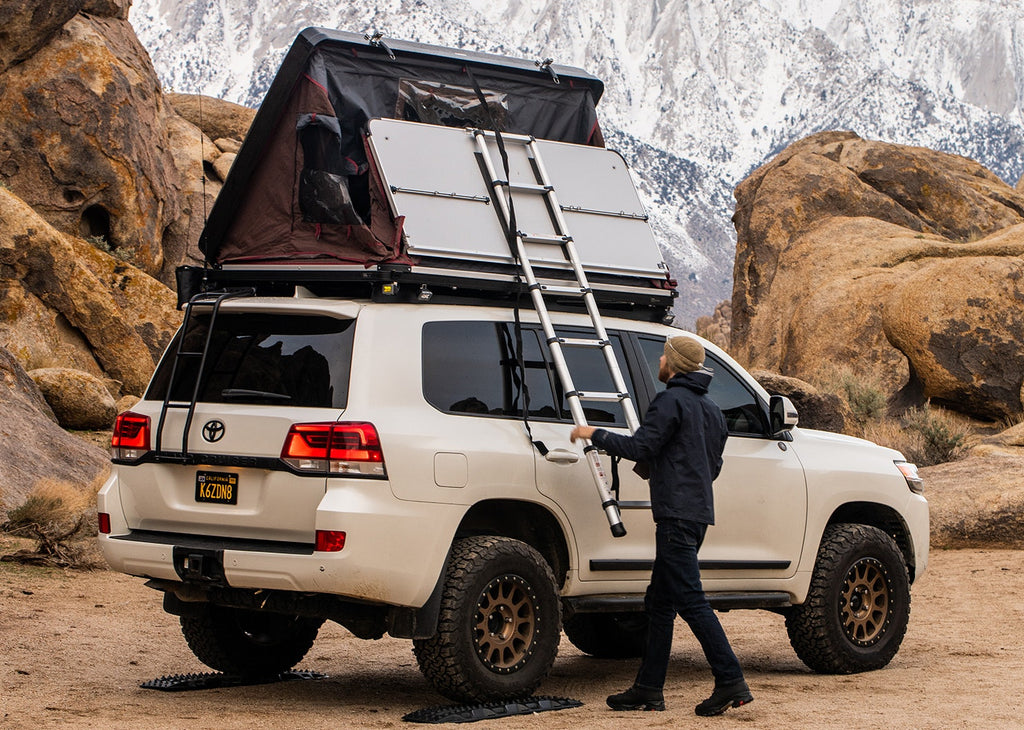
How much weight can you put on a roof rack / crossbars?
This topic goes hand in hand with the roof top tent that you choose and what else you plan on adding to the roof of your car. Here you will learn how to find the weight capacity of your crossbars and how to find the weight capacity of your roof rack.
There are two types of weight capacities and both of them are relevant to the tent you get. You might be asking yourself, "Are roof top tents too heavy for my vehicle?". Before you order your roof rack or cross bars, you will want to calculate the total weight you plan on adding. Will it only be your roof top tent, or do you plan on adding an awning, fuel cans, and storage case? Knowing this will help you determine your roof rack setup.
What is Dynamic Weight Capacity: This is the weight limit of a rack while it is in motion on road. Some racks even have a different dynamic weight capacity for off road use because the vehicle is subject to additional stresses compared to your typical road driving.
What is Static Weight Capacity: This is the weight limit of your cross bars or rack while your vehicle is stationary. Typically that means the total weight of you roof top tent + additional gear + the occupants in the roof top tent.
Our roof top tents weigh between 125lbs and 165lbs, so we always recommend to find a cross bar or rack that meet and preferably exceeds the weight of our roof top tent, especially if you plan to go off road.
We designed the Skycamp Mini 3.0 (125lbs) with the lightest materials, so it will mount on compact vehicles and short truck beds without impacting the driving characteristics.


Can you put a roof top tent on crossbars?
This is the most cost effective and simple mounting solution for your roof top tent. There are a few different types of cross bars for a roof top tent and how they attach will depend on your vehicle. Cross bars are a great option because they are compatible with more vehicles because they aren't built specific to the size of your roof like most roof racks.
However, if you plan to carry a lot of gear on your vehicle, you may want to consider a roof rack instead of cross bars (You will learn more on roof racks later).
Since there are many types of mounting options for cross bars, you will want to contact your dealer to find out which type you have. Once you know the type of rail you have, companies like Thule and Yakima have vehicle fit tools that allow you to input your vehicle information, and they will recommend the exact type of cross bars that will work with your vehicle. We've created a list of common rail types below.
Raised Side Rails:
These raised rails run parallel to your doors. Typically, there is a gap between the rail and your roof, and the cross bar will clamp to this.
Flush Side Rails:
These rails run parallel to your doors and are flush mounted to your roof with no gap. Typically, your cross bars will mount directly to this rail with a vehicle-specific mounting foot.
Gutters:
This metal ridge runs along to top of your roof and is meant to keep water from running down the side of your windows. There are special mounting feet that attach to this ridge and provide a solid mount for your cross bars.
Existing Factory Mounting Points:
There will be 4 attachment points on the roof of your vehicle. These are most often covered by a rubber or plastic cover and have threaded inserts to mount the cross bars using bolts.
Tracks:
Long metal channels, slots, or tracks that run above your doors in a similar location to side rails.
Factory Roof Rails:
Some vehicles are equipped from the factory or as an option at the dealership with roof rails with cross bars pre-mounted. Please note that many factory cross bars are not made to carry the dynamic or static weight capacity needed for a roof top tent (You will learn more about weight capacity later).
Below is an example of our Skycamp Mini mounted on cross bars using the mounting brackets included with your RTT. The first bracket is the 2.0 version and the second bracket is the 3.0 version (not compatible with 2.0 RTTs).


Mounting Bracket 2.0 & 3.0 (Below)


What kind of roof rack is needed for a roof top tent?
Roof racks are a great option for the camper that plans to mount a roof top tent, an awning, traction boards, storage box and anything else you can think of on the vehicle's roof. Once you install the roof rack system, it will likely live on the roof of your vehicle for the lifetime of ownership, so it can definitely be worth the added expense and time to mount. Having the surface area to mount more gear on your roof clears up the interior space of your vehicle to make it more comfortable and less crowded.
We will be focusing on roof racks with mounting rails/cross bars and not the basket-type roof racks that are often installed from the factory or at the dealership. You can't mount a roof top tent to a basket-style roof rack.
Some companies we suggest are Prinsu, Front Runner, Rhino Rack, and Gobi.
Below are examples of a flat roof rack with a roof top tent mounted to the cross bars.


Bed Rack (Trucks only)
There are a wide range of bed racks out there, spanning from basic (like the Yakima OverHaul HD bed rack) to highly engineered systems (like the Leitner Designs Active Cargo System). In contrast to cross bars and roof racks, bed racks are not as universal so there are less options (sometimes no options) to choose from depending on your vehicle. Which bed rack you get depends on what you want to accomplish and of course, budget.
If you have a truck bed under 7' and you want a 4-person roof top tent like the Skycamp 3.0 or X-Cover 2.0, you will need a cab-height bed rack. This allows the roof top tent to extend over the cab rather than hang past the tailgate. Additionally, this gives you the maximum amount of vertical storage space in your bed.
If you plan on using a 2-person roof top tent like the Skycamp 3.0 Mini or X-Cover 2.0 Mini, then a mid-height or low bed rack can work for you. This lowers the center of gravity of your vehicle for better off-road handling, typically allows for a better MPG because of reduced wind drag, and brings the roof top tent lower making it a little easier to get in and out.
Some companies that make a cab-height bed rack are Leitner Designs, upTop Overland, Prinsu, and Yakima.
Some companies that make a lower bed rack are: upTop Overland, C4 Fabrication, Front Runner Outfitters, & BillieBars.
Below are examples of cab-height & mid/low bed racks with a roof top tent mounted to the cross bars.


Here's A Recap:
Wow! That was a lot of info to sift through, but we distilled it into the most important aspects of choosing the right mounting solution for your roof top tent and accessories.
Remember:
1. The roof top tent you choose and your vehicle will determine the type of roof rack or cross bars you get.
2. Always check the dynamic and static weight capacity to make sure it will carry the intended load. Contact the manufacturer to make sure!
3. Ask us if you have any more questions!
Our customer service team is here to help you decide which roof top tent and accessories will work best for you. Please don't hesitate to ask them if you have any more questions.
